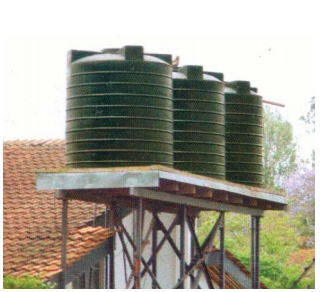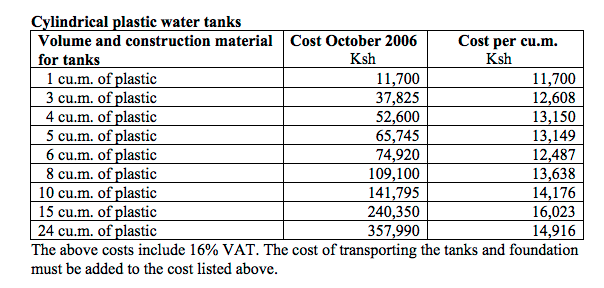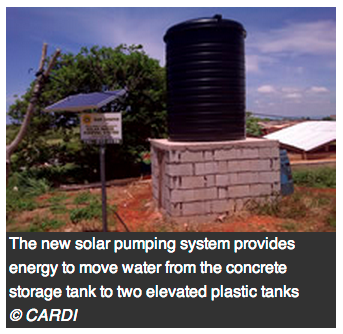Difference between revisions of "Elevated plastic tanks"
From Akvopedia
| Line 1: | Line 1: | ||
[[Image:elevated plastic tanks.png|thumb|right|200px|Photo: [http://www.samsamwater.com/library/Book7_Water_from_roofs.pdf SamSam Water]]] | [[Image:elevated plastic tanks.png|thumb|right|200px|Photo: [http://www.samsamwater.com/library/Book7_Water_from_roofs.pdf SamSam Water]]] | ||
| − | [[Image:plastic elev tank.png|right|200px|]] | + | [[Image:plastic elev tank.png|thumb|right|200px|Photo: [http://www.new-ag.info/en/research/innovationItem.php?a=2706 Water harvesting technologies increase productivity in Jamaica].]] |
One option for plastic tanks is cylindrical tanks that are made of two seamless layers of [http://www.essentialchemicalindustry.org/polymers/polyethene.html polyethene]; the inner layer being white and the outer being black. The tanks are UV stabilized and will not break down under harsh outdoor weather conditions. | One option for plastic tanks is cylindrical tanks that are made of two seamless layers of [http://www.essentialchemicalindustry.org/polymers/polyethene.html polyethene]; the inner layer being white and the outer being black. The tanks are UV stabilized and will not break down under harsh outdoor weather conditions. | ||
Revision as of 23:52, 17 September 2013

Photo: SamSam Water
One option for plastic tanks is cylindrical tanks that are made of two seamless layers of polyethene; the inner layer being white and the outer being black. The tanks are UV stabilized and will not break down under harsh outdoor weather conditions.
Costs

Chart: SamSam Water
Acknowledgements
- SamSam Water - Book7: Water from roofs.

